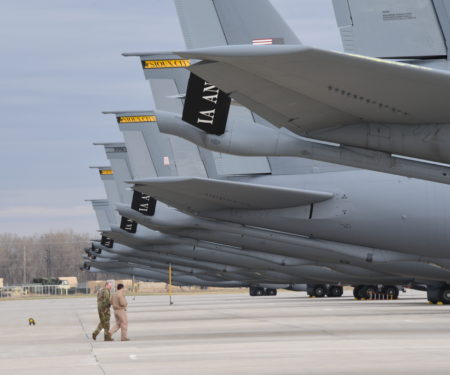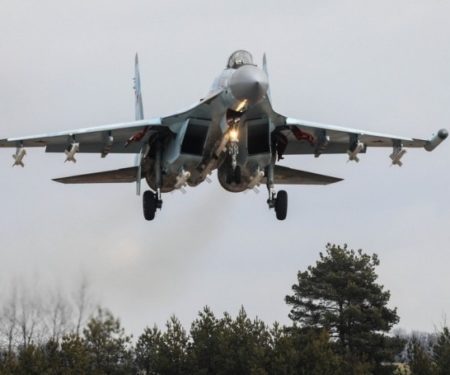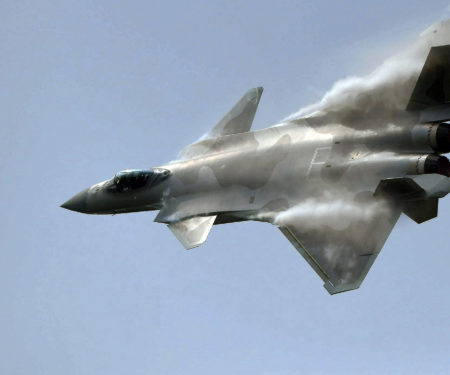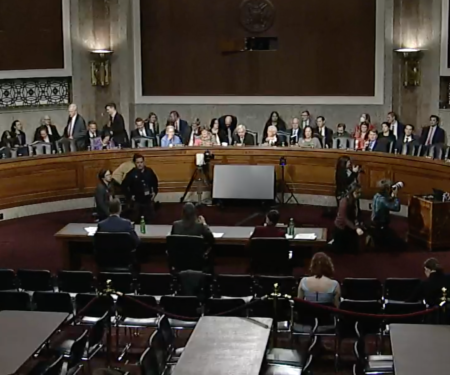Radar Sweep
NATO Vows More Ammo and ‘Additional Capabilities’ to Boost Ukraine Spring Offensive
NATO will review ammunition stockpile targets in a bid to increase capacities across international production facilities, as the alliance looks to urgently step up arms supplies to Ukraine so the Eastern European country can mount a spring offensive against Russia. The move was announced Feb. 15 by NATO Secretary General Jens Stoltenberg during a two-day defense ministers summit in Brussels, which also saw the United Kingdom, Netherlands, Norway, Sweden, and Denmark agree on the first International Fund for Ukraine (IFU) equipment package.
Pentagon Technology Chief Seeks Low-Cost Deterrence Concepts
The Pentagon’s chief technology officer is looking for low-cost options for deterring, and, if necessary, intervening in, overseas regional conflicts that involve U.S. allies. Undersecretary of Defense for Research and Engineering Heidi Shyu is commissioning a study from the Defense Science Board that considers how the U.S. military can apply technology, training and operational approaches in ways that deter “emerging regional powers” from invading neighboring countries.
2 Dead after Black Hawk Helicopter Crashes onto Alabama Highway: US Official
Two fatalities were reported after a Black Hawk helicopter crashed onto an Alabama highway Feb. 15, a U.S. official confirmed to ABC News. The crash occurred on Highway 53 near the intersection of Burrell Road in Madison County, near the Alabama-Tennessee border, according to the Alabama Law Enforcement Agency. The helicopter belonged to the Tennessee National Guard, according to a U.S. official.
Lawmakers Seize on Spy Balloon to Inflate Defense Spending
Defense hawks in Congress cite many reasons to keep money flowing to the Pentagon: enemy fleets, hypersonic missiles, nuclear threats. Now they have a new one, and it was shot down over the Atlantic Ocean on Feb. 4. Lawmakers and lobbyists are pouncing on a Chinese spy balloon’s seven-day incursion over North America this month to push back against possible defense budget cuts—and make the case for even more funding—as Congress grapples with the growing threat from Beijing and doubts about the military’s ability to detect similar objects.
Mississippi Lawmakers Want to Keep Aging T-1A Training Jet in Service
Mississippi lawmakers are pleading with Air Force officials to keep the aging T-1A Jayhawk, a training jet that has been around for more than 30 years, in service as the Pentagon hopes to replace the aircraft with flight simulation instead. A letter sent Feb. 13 to Air Force Secretary Frank Kendall from U.S. Sens. Roger Wicker and Cindy Hyde-Smith, as well as U.S. Reps. Michael Guest and Trent Kelly, all Mississippi Republicans, said delays in new flight simulators and new training aircraft means the planned retirement of T-1As could cause issues for pilots.
PODCAST: Using IT Modernization to Enable Warfighters; What Air Force Is Learning from Hackathons
The Air Force will conduct its next “BRAVO” hackathon March 20 through March 24 at Hurlburt Field in Florida. Prior BRAVO hackathons have resulted in prototypes and innovations that influence major Department of Defense programs. Stuart Wagner, chief digital transformation officer of the Air Force and Space Force, and Jimmy “Rev” Jones, lead program manager of the Air Force’s “STITCHES” warfighter application team, discuss the goals for the upcoming hackathon and the impact previous hackathons have had on DOD operations.
DIA Report Confirms Russia’s Use of Iranian Drones in Ukraine
A new report from the Defense Intelligence Agency has confirmed that Russia is using Iranian-made drones in Ukraine after months of reports based on open-source intelligence. The new unclassified report “provides a visual comparison of UAVs used by Russian forces in Ukraine and Iranian UAVs used to attack U.S. and partner interests in the Middle East,” according to its summary. “Photos of UAV debris and components from Ukraine are consistent with systems showcased at military expos and other venues in the Middle East. This analysis confirms Russia’s use of various lethal UAVs in its war in Ukraine.
Pentagon Working with Congress on Unclassified Space Strategy
The Defense Department’s space policy office is drafting a congressionally mandated report explaining how the U.S. will defend satellites in orbit. DOD has a top-secret space defense strategy but Congress wants an unclassified version that explains to the public the threats facing U.S. satellites and what can be done in response. “We’ll be writing that unclassified report,” Assistant Secretary of Defense for Space Policy John Plumb said Feb. 14 at a Mitchell Institute for Aerospace Studies event.
US Tracked China Spy Balloon from Launch on Hainan Island Along Unusual Path
By the time a Chinese spy balloon crossed into American airspace late last month, U.S. military and intelligence agencies had been tracking it for nearly a week, watching as it lifted off from its home base on Hainan Island near China’s south coast. U.S. monitors watched as the balloon settled into a flight path that would appear to have taken it over the U.S. territory of Guam. But somewhere along that easterly route, the craft took an unexpected northern turn, according to several U.S. officials.
OPINION: Is the US Ready to Address China’s Threats in Time to Make a Difference?
“Are we prepared to deal with aggression from China? We hear increasingly strident rhetoric from Beijing. They issue veiled threats against U.S. surveillance aircraft operating in international airspace. The potential for miscalculation escalating to conflict is growing,” write Brian J. Morra, a senior fellow at the Potomac Institute for Policy Studies, retired Lt. Gen. David A. Deptula, dean of the Mitchell Institute for Aerospace Studies, and Jeffrey “Skunk” Baxter, a senior consultant on defense and intelligence matters.
A Brief History of the Pentagon’s Efforts to Track and Identify UFOs
The U.S. military’s history of encounters with unidentified flying objects goes back to World War II. One of the first major UFO sightings came in 1942, when anti-aircraft batteries around Los Angeles opened fire at objects in the sky that they thought were Japanese aircraft. The Army determined later that a lost weather balloon had caused a false alarm.




